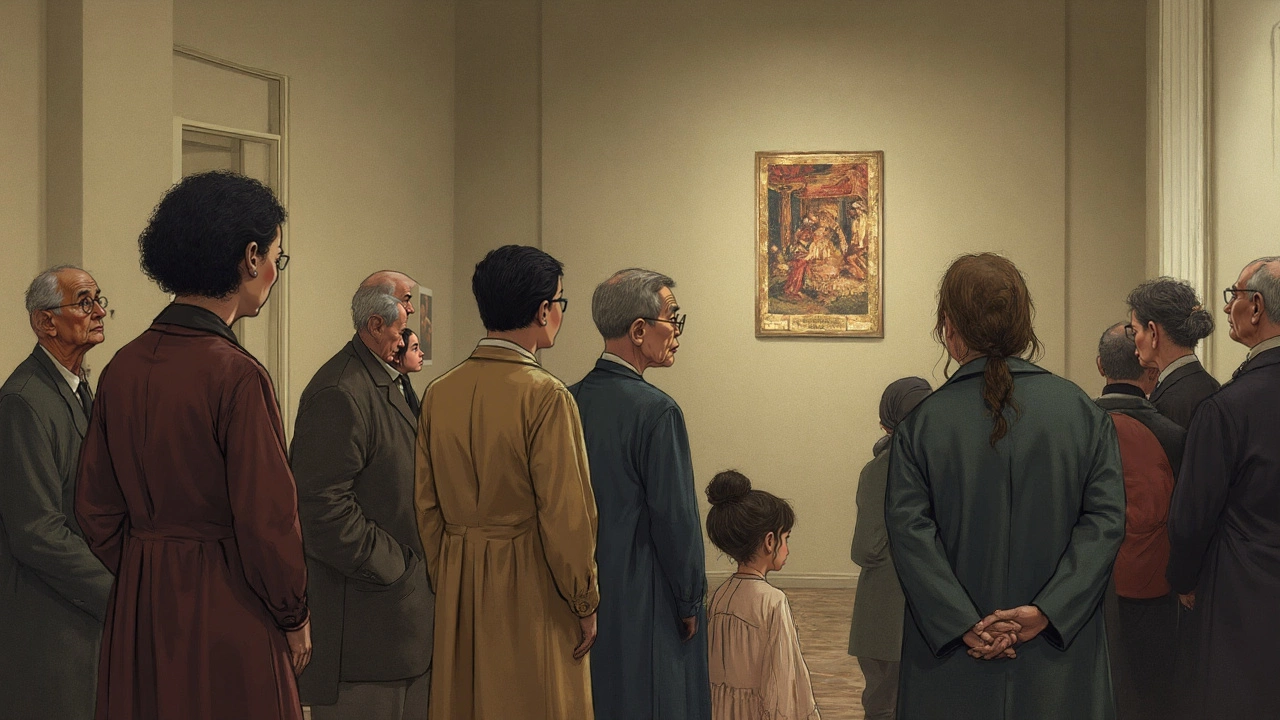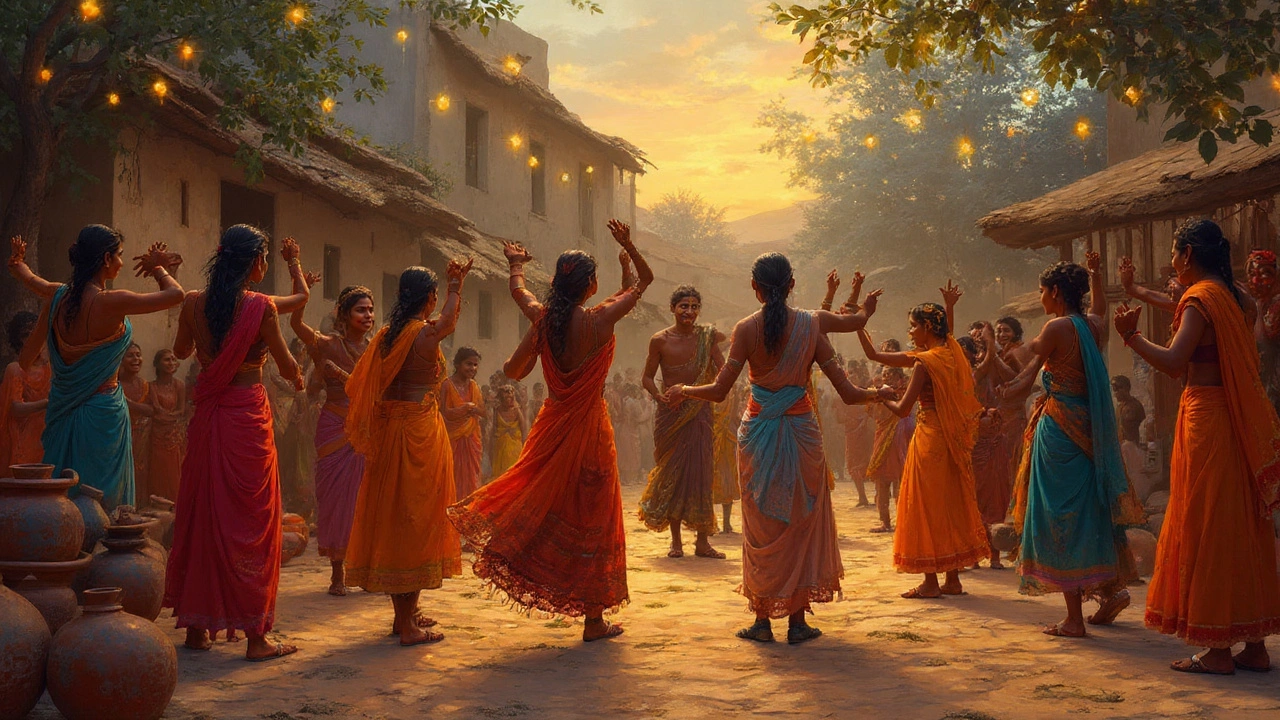Ever heard someone joke, “That country must be so serious, they probably don’t even dance”? It sounds wild, right? The idea of an entire nation just never breaking into a two-step at weddings or shimmying at a festival. Still, the question sticks—are there really countries that don’t dance, or is this all about stereotypes and a misunderstanding of culture?
How Dance Sits at the Heart of Human Culture
Take a trip around the globe, even just online, and you’ll spot people dancing somewhere every hour of the day. It can be in a Mumbai street during Ganesh Chaturthi, a village in Ghana doing the Agbadza, couples swaying in a Parisian bar, or even kids on TikTok. The urge to move your body to music or rhythm is nearly universal. Researchers have found cave paintings in India and Spain portraying dancing figures dating back over 9,000 years. Historians can’t agree on exactly when dance appeared, but pretty much every old civilization—Sumerians, Egyptians, Indigenous Australians—left evidence of ritual or celebratory dance. The oldest written records mention Sumerian priestesses dancing for the gods. That means dance might predate written history.
But this sense of ‘everyone dances’ hides a big mix of styles, beliefs, and rules. What’s cool in one country could be a scandal in another. Some cultures celebrate wild movement, others stick to careful, restricted steps. In some places, dance is downright forbidden outside religious contexts.
Are There Truly Dance-Free Countries?
Let’s clear the air—there is no country on Earth where zero dancing happens. Every nation has at least one form of rhythmic movement or traditional dance, even if it’s rare or limited. That said, there are countries or communities where dance is heavily restricted, discouraged, or illegal in certain public or private situations.
Take Iran and Saudi Arabia, for example. In both countries, strict religious laws have, at various times, banned public dancing, especially for women. In Iran, after the 1979 revolution, public dance pretty much vanished from the streets and schools. But people still dance in private, and Iran even has a dance underground popping up on social media. Saudi Arabia also clamped down on dancing in the 1980s, labeling it against Islamic values. There, public dance is rare, but men sometimes perform traditional sword dances at big events. Private gatherings are more relaxed, but you won’t find nightclubs or dance bars.
North Korea takes a different approach. Dance isn’t banned, but it’s carefully staged and controlled by the state. Every move must fit government-approved themes, and performing foreign dance can bring trouble. It’s more about patriotic displays than spontaneous fun.
An interesting outlier is Afghanistan under the Taliban (especially between 1996 and 2001, and again after 2021). All forms of music and dancing were outlawed, and breaking the rules meant harsh punishment. Still, Afghans held on to secret traditions—folk dances like the Attan survived in private homes and rural villages. During more liberal years, these games came back strong.
Western countries don’t escape dance bans either. Between the 17th and 19th centuries, religious sects like the Puritans in England and America, and conservative Christians in Scandinavia, saw dance as sinful. Some towns made it outright illegal! Even today, “blue laws” in parts of the US restrict dancing in bars or after certain hours. Remember that scene in "Footloose"? Not just a movie—Oklahoma’s last dancing ban was repealed in 1980.
Culture Clashes: Why Do Some Societies Resist Dance?
So why does anyone ban dance? The reasons are all over the place, but most boil down to religion, politics, and social control.
- Religion: In conservative Islamic law, public dance (especially between men and women) is seen as tempting immorality. Christian fundamentalists warn dance stirs the body and mind in sinful ways. Orthodox Jews and some Hindus discourage public dancing for the same reasons.
- Politics: Authoritarian governments don’t like big unsupervised gatherings—dances look like perfect cover for protest or forbidden romance. When the Soviet Union tried to stamp out local traditions, folk dances sometimes survived underground. North Korea and some African regimes are still wary.
- Gender: It’s often about control over women’s visibility and actions. Iran and Saudi Arabia are famous for policing women's dancing in public. In some cultures, men dance freely, but women are shamed or punished.
- Modernity vs. Tradition: Sometimes new styles like hip-hop or breakdancing get lumped in with cultural decay. This clash happens everywhere, from rural China to ultra-orthodox Jewish communities in New York.
But as tough as the bans get, humans adapt. If you lock the dance halls, folks will dance in kitchens, bedrooms, or fields. In Iran, a viral clip of teens dancing to Pharrell’s "Happy" had them thrown in jail—but copycat videos spread even farther. It’s like squeezing a balloon: repression builds pressure, rebellion pops up somewhere new. In some places, breakdancing or ballroom culture becomes an act of quiet protest.

Dancing Underground: Secret Traditions and Hidden Rhythms
Sometimes the best party is the one that’s not allowed. Wherever bans have landed, secret dance scenes start to bloom. You’ll find them by looking for coded invitations, blocked curtains, and the thump of bass through the wall.
In Iran, private dance parties are an open secret in Tehran’s upper-middle class homes. Saudi Arabian TikTok users sometimes post tiny glimpses of home dancing—risking a knock on the door but picking up thousands of likes. In Indonesia, Aceh province tries to ban mixed-gender parties, but wedding guests will sneak a little ‘dangdut’ on the side. Parts of Russia in Soviet days hid wild swing parties behind locked doors, vinyl spinning courtesy of contraband American records—sometimes literally carved onto discarded x-ray film.
If secret is your style, check out Mumbai’s underground LGBTQ+ "voguing" scene, born because mainstream clubs refused entry. In Albania, traditional line dances survived decades of communist crackdown thanks to old ladies teaching kids in living rooms when the police left during the day.
Across the world, dance as rebellion sneaks up more than you think. Punk scenes in 1980s Poland, pop idol flash mobs in China, even secret tango clubs hidden in Buenos Aires under military dictatorship—it’s always been about connection as much as the moves.
The Data: How Widespread are Dance Restrictions?
Let’s get into the numbers. There’s no global “dance ban index,” but cultural mapping studies make the situation clearer. The Pew Research Center polled 40 countries in 2022 about social restrictions—including on dancing. They found:
| Country/Region | Public Dance Ban | Restrictions by Gender | Religious Reason | Main Dance Type |
|---|---|---|---|---|
| Iran | Yes (public) | Women | Yes | Solo folk, secret social |
| Saudi Arabia | Yes (public) | Women | Yes | Men’s sword dance |
| North Korea | No (state-permitted) | All | No | Patriotic choreography |
| Afghanistan (Taliban era) | Yes (all) | All | Yes | Secret folk |
| USA (select states) | Local bans (blue laws) | All | Varies | Various |
Also, there’s a fascinating study by Dr. Judith Lynne Hanna about dance bans worldwide. She counts over 2 dozen societies (not countries but regions or subcultures) with some kind of anti-dance law or taboo since the 1800s. That includes ultra-orthodox Haredi Jewish communities, Puritan New England, parts of Sudan, Chechnya’s strict period, and Aceh in Indonesia where Islamic law forbids mixed dancing.
None of these places go dance-free. Something always survives—weddings, kids playing, or a stolen solo in front of the mirror. The twist is, most bans don’t kill the urge to dance. They change where and how it happens. If anything, the rules can even make people want to dance more.
Dance Finds a Way: Why It’s Impossible to Wipe It Out
So, if you rock up in any country on Earth and start humming a tune, chances are someone will move to the rhythm—even if it’s a tiny toe-tap or a full-on breakdance. Dancing’s wired into us. Recent research from the University of York shows even infants, before they can walk or talk, will sway to music or their parents’ clapping. Brain scans find movement to a beat sparks joy centers, reduces stress hormones, boosts confidence, and even helps us bond. Dr. Peter Lovatt (a dancer-turned-psychologist) found in his studies that when people are told they can’t dance, they get fidgety and more likely to move in private. Tell a group of children not to wiggle—it’s like asking the sun not to rise.
The roots run deep. Dance is how generations pass down stories, mark big moments, or just forget about struggles for a few minutes. In my own family in Brisbane, we mix cultures—Indian, Portuguese, Aussie—and every birthday turns into a clash of Bollywood and pub rock moves. My mate’s Greek Orthodox uncle won’t allow line dancing in his house, but catch him after a glass of ouzo and he leads the sirtaki.
Even in places with massive pressure not to dance, people find clever workarounds. Iranian girls film TikToks on rooftops. Saudi boys organize "majlis" (private house parties) with electronic music. Ultra-conservative Christian towns in the US eventually fold to the pressure of high school proms. Even North Korea lets amateur folk groups practice behind closed doors.
If you visit a country with dance restrictions, respect the rules but look for local advice—sometimes an invitation to a wedding or religious festival will get you a secret glimpse. Never assume because a place is strict, the people inside have given up moving to music. Ask questions, learn, and share stories—just maybe leave your light-up club shoes at home, unless you want a truly wild story for later.
The truth is, there’s no such thing as a place where dance doesn’t exist—just places where it hides until the music gets too strong to ignore. That’s always been part of being human. Countries that don't dance? The dance is just waiting for the right beat.
